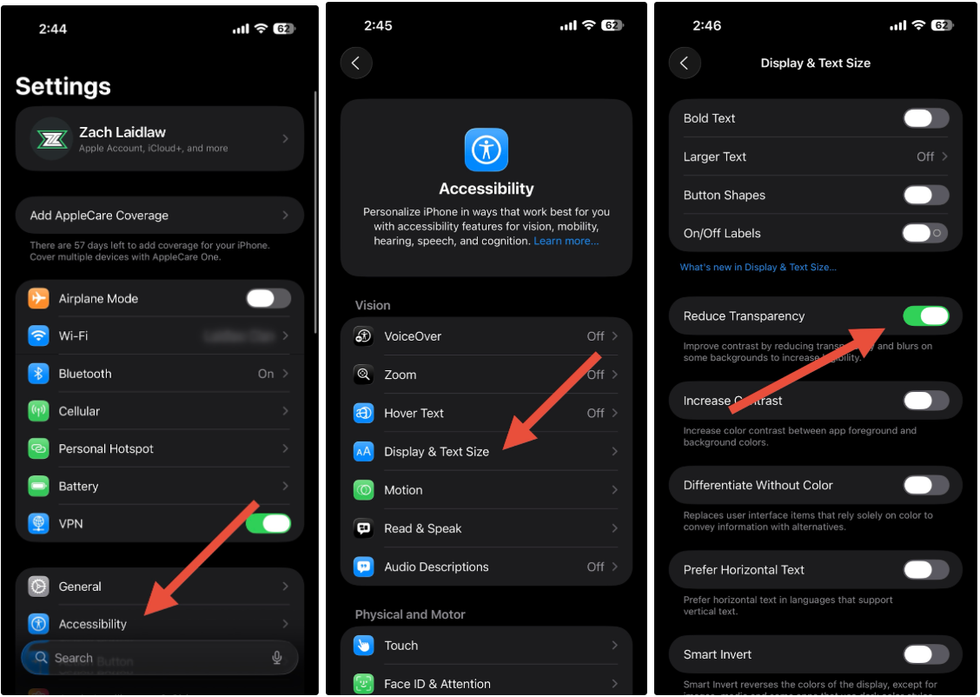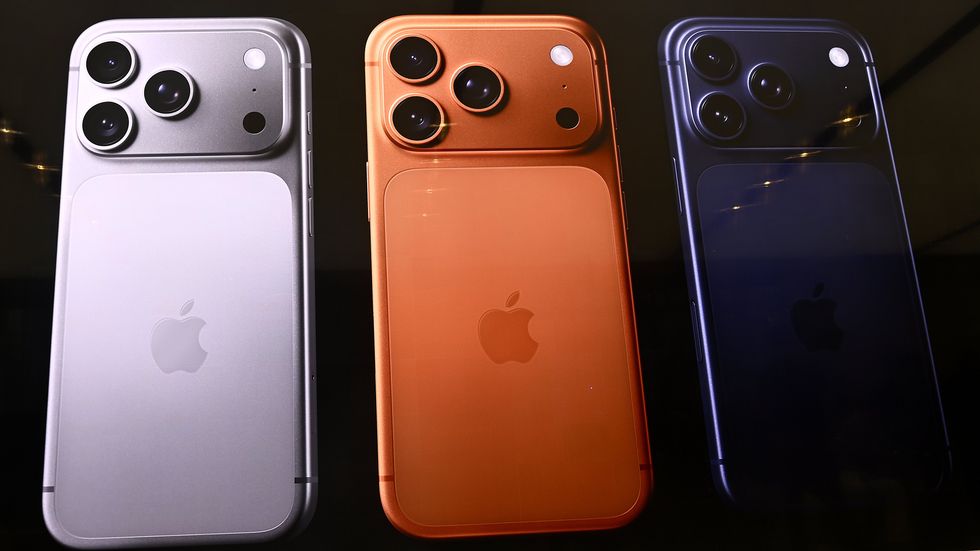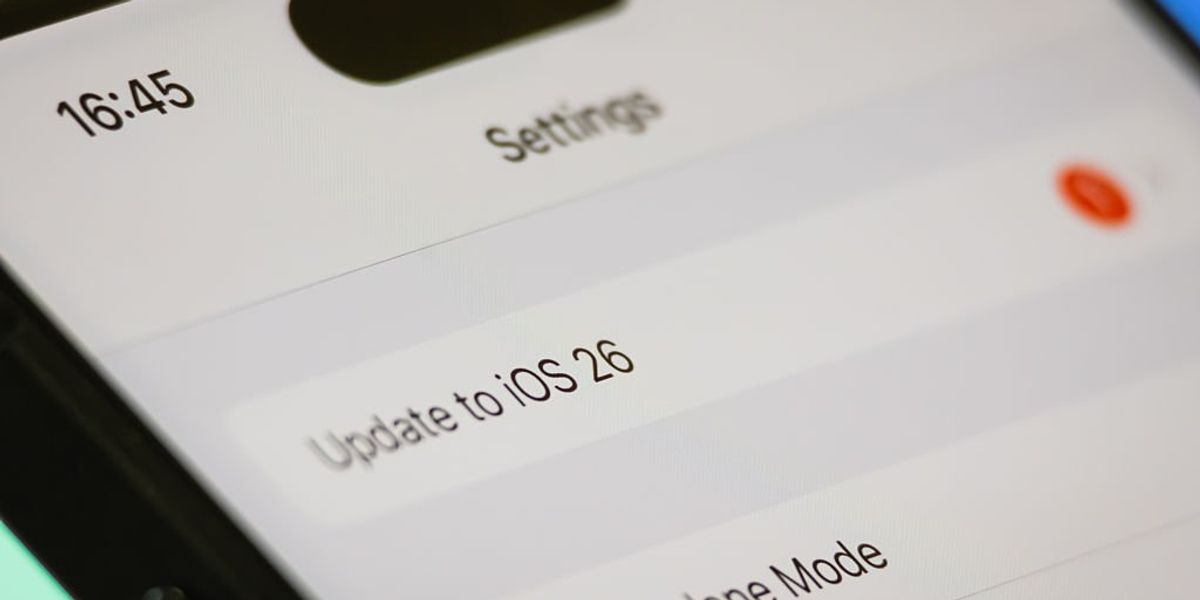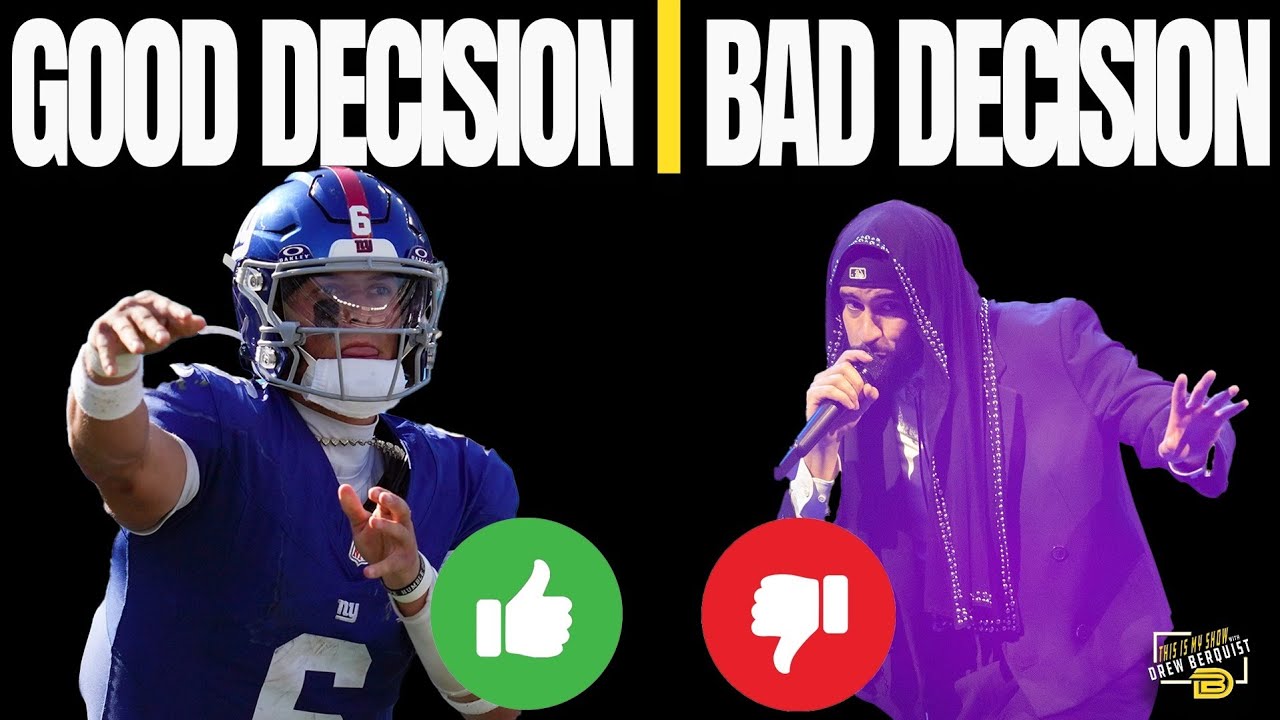Every fall, Apple releases the latest software updates for its fleet of iPhones, iPads, and more. This year is exceptionally special, as iOS 26 brings a brand-new look to iPhones everywhere. Unfortunately, the refreshed design makes text difficult to read throughout the operating system, but don’t worry. We have an easy fix.
iOS 26 is a Liquid Glasstastrophe
Apple has some big changes for iOS this year. For starters, the numbering scheme moved from its usual sequential order to an annual system. Instead of iOS 18 upgrading to iOS 19, it’s jumping to iOS 26 in recognition of 2026. The rest of Apple’s software ecosystem also got the same treatment, with iPadOS 26, watchOS 26, macOS 26, and tvOS 26 all available now.
The next big change is the design. As the first major iOS overhaul since 2013, this year ushers in an entirely new design language called “Liquid Glass.” The main theme of iOS 26 is inspired by the way light fluidly interacts with panes of glass in the real world. As a result, the update is packed with transparent layers, light refractions, and buttons that react like tiny droplets of water when dragged or touched.
A befuddled Apple is still refining its look and feel in iOS 26.1, even after an entire summer of beta tests.
While iOS 26 won’t drastically change the way your phone works, Liquid Glass certainly impacts how the UI looks and feels, especially when it comes to text. Many of the transparent layers throughout iOS 26 — like Notification Center and Control Center — are filled with words, and although Apple tried to improve legibility with subtle background blurring, the unfortunate truth is that many sections are either hard to read or just plain distracting:
Screenshots: Zach Laidlaw
Luckily, there’s a simple fix.
How to make iOS 26 easier to read
Apple deserves the blame for iOS 26’s legibility issues, but the company also included an accessibility setting to reverse it. Just follow these steps for instant eye relief.
- Open up the “Settings” app on your iPhone. If you’re not sure where to find it, swipe down from the center of your home screen and type “Settings” into the Spotlight search bar.
- Scroll down and tap on the blue “Accessibility” icon.
- Tap the blue “Display & Text Size” icon.
- You’ll find “Reduce Transparency” near the top of your screen. Select that.

With the push of a button, all of the difficult-to-read transparent panes in Liquid Glass are replaced by opaque layers, making text much easier to digest. This same feature also works on iPads running iPadOS 26, so be sure to enable it there too, if you need it.
RELATED: Apple is falling — is the smartphone next?

Bonus tip
If you hate Liquid Glass, you can avoid it altogether, at least for now. Apple will continue to support iOS 18 for a little while longer, which means you can stay on the current version and receive the latest security updates until you’re ready to make the switch.
Keep in mind that all four new iPhones this year come with iOS 26 built in, and there’s no way to roll the software back to iOS 18 once you’re there. Liquid Glass is unavoidable if you upgrade to iPhone 17, iPhone 17 Pro, iPhone 17 Pro Max, or iPhone Air.
iOS 26 is currently available for iPhone 11 and up. Models released before 2019 cannot install the update.
More pane points to come?
With the last major iOS redesign dating back to more than a decade ago, iPhone was well overdue for a fresh coat of paint. The new transparent layers, smooth animations, and bloopy buttons of Liquid Glass breathe new life into a device category that’s nearly 20 years old, and for that, it’s a welcome change.
That said, iOS 26 isn’t for everyone. The buzz online suggests that it’s more polarizing than pleasing, and a befuddled Apple is still refining its look and feel in iOS 26.1, coming this fall, even after an entire summer of beta tests. The version of Liquid Glass that’s on devices today may not be its final form, but until Apple figures out how to thread the needle between transparency and legibility, it might just be easier to turn the glass panes off entirely.
Read the full article here






![Swalwell Promises Democrats Will Hunt ‘Private Actors’ Doing ‘Drug Deals’ with Trump [WATCH] Swalwell Promises Democrats Will Hunt ‘Private Actors’ Doing ‘Drug Deals’ with Trump [WATCH]](https://www.lifezette.com/wp-content/uploads/2025/07/2025.07.29-05.00-lifezette-6888fe11009f4.jpg)





